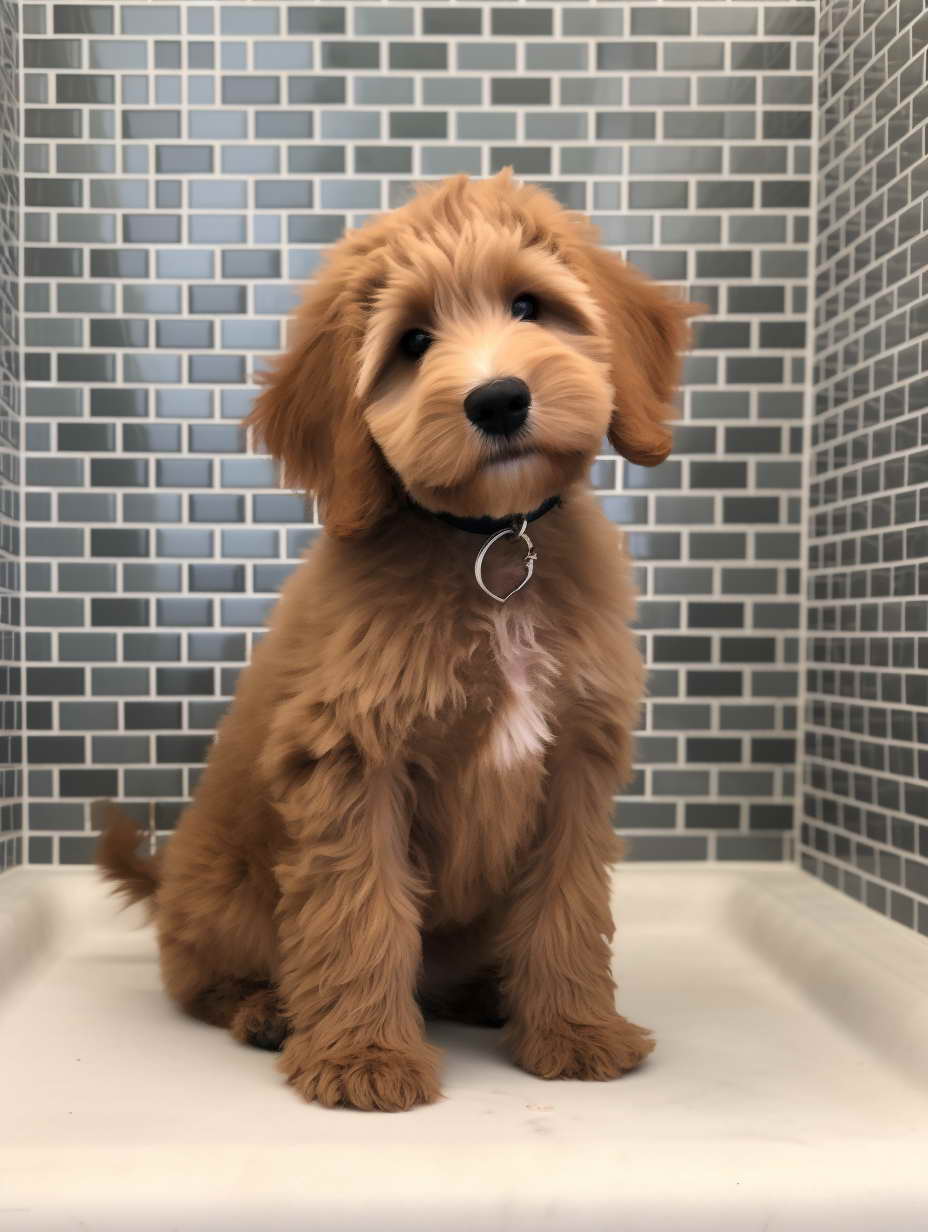How Long Does It Take To Potty Train A Goldendoodle: Can You Do It in 2 Weeks?
Introduction
Potty training your Goldendoodle is a crucial step in ensuring a harmonious relationship with your furry companion. But how long does it take to potty train a Goldendoodle effectively? In this comprehensive guide, we’ll explore the process, share expert tips, and gather information based on WalkAndWagChapelHill.com article also answer your burning questions about potty training these lovable dogs by leaving a comment at the end of this article.
Usually How Long Does It Take To Potty Train A Goldendoodle?
Potty training duration varies from one dog to another. It depends on factors such as the dog’s age, temperament, and your dedication to the process. On average, here’s a rough timeline:
- 3-4 Months: Some Goldendoodles catch on quickly and may be fully trained in just a few months.
- 5-6 Months: For others, it might take a bit longer, usually around five to six months.
- Up to 1 Year: In some cases, especially with stubborn or very young puppies, it can take up to a year.
Remember, patience and consistency are key. Don’t get discouraged if it takes a bit longer than expected.
Can You Potty Train A Goldendoodle in Just 2 Weeks?
Yes, you can potty train a Goldendoodle in just 2 weeks, this basically can be applied to any dog. This method is based on walkandwagchapelhill.com.
- First, you need a bell.
- Utilize a ribbon to hang the bell from the door that leads to your dog’s outdoor restroom. The bell should fall at or just below the level of your dog’s nose.
- When the moment comes to step outdoors, delicately sway the chime, allowing it to lightly brush against your canine companion’s snout.
- Give your dog praise and let them out by opening the door.
- Use this method by repetition a minimum 3-4 each time the dog goes outside for 7 days.
- On the eighth day, gently move the bell so that it stops swaying just in front of your dog’s nose. If your dog extends her muzzle to touch the bell, you are ready to proceed. If not, repeat steps 3 and 4 for another day or two and then try again.
- Gradually assist your dog less and less when it’s time to ring the bell. By the 14th day, you’ll probably be able to stand at the door and wait for your dog to ring the bell all by herself.
Expert Tips for Successful Potty Training
Now, let’s delve into some expert tips based on WalkAndWagChapelHill.com on how to make the potty training process smoother and faster:
1. Use a Crate Strategically
A crate can be a powerful tool in your potty training arsenal. Dogs instinctively avoid soiling their living space, making it easier to teach them where to go. Use the crate during times when you can’t directly supervise your pup, such as when you’re at work or asleep. Ensure the crate is appropriately sized – not too big, allowing enough room to stand and turn around, but not too small to be uncomfortable. Introduce your Goldendoodle to the crate gradually, making it a positive and safe space. Over time, they’ll learn to hold it until they can go outside.
2. Supervise Closely Indoors
When your Goldendoodle is indoors, especially during the early stages of training, keep a close eye on them. This vigilant supervision allows you to intervene immediately if you notice signs that they need to go. Watch for restlessness, sniffing around, or circling. The goal is to whisk them outside before an accident occurs, reinforcing the idea that potty time is an outdoor activity.
3. Clean Accidents Thoroughly
Accidents will happen, but how you handle them is essential. Clean up any accidents promptly and thoroughly, using an enzymatic cleaner. These cleaners break down the odor molecules, making it less likely that your Goldendoodle will return to the same spot. If they can still smell their previous accidents, they might think it’s an acceptable potty area. So, efficient cleaning is a key step in preventing repeat accidents.
4. Consistent Commands and Praise
When taking your Goldendoodle outside for potty breaks, use consistent verbal cues like “go potty” or “do your business.” Over time, your pup will associate these phrases with the act of going potty. Also, remember to offer plenty of praise and perhaps a treat when they do their business outside. Positive reinforcement helps your Goldendoodle understand that they’re doing the right thing.
5. Gradual Independence
As your Goldendoodle becomes more reliable with their potty training, gradually give them more freedom indoors. This doesn’t mean giving them a full run of the house immediately but expanding their access to different areas slowly. Keep a watchful eye during this phase, ready to redirect them outside if needed. This incremental increase in independence can help cement their potty training success.
FAQs
How do I know my Goldendoodle is ready to be potty trained?
There’s no specific age, but puppies can start learning as early as 8-12 weeks. Look for signs of bladder control and an understanding of basic commands.
What if my Goldendoodle keeps having accidents?
Be patient and keep following the routine. Accidents are part of the learning process, and punishing your pup won’t help.
Can I use pee pads for potty training?
Pee pads can be used, but it’s best to transition your Goldendoodle to outdoor potty training for long-term success.
Is it possible to potty train an adult Goldendoodle?
Yes, you can potty train an adult Goldendoodle, but it may take longer than with a puppy.
My Goldendoodle seems afraid to go outside. What can I do?
This fear may be due to past negative experiences. Gradually introduce your pup to the outdoors and offer lots of encouragement and treats.
How can I handle nighttime potty training?
Limit water intake before bedtime, and take your Goldendoodle out just before sleep and as soon as they wake up in the morning.
Conclusion
Potty training your Goldendoodle may require time and effort, but the bond you’ll create with your furry friend will make it all worthwhile. Remember to be patient, stay consistent, and use positive reinforcement to make the process as smooth as possible.


Leave a Reply